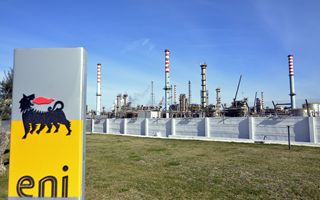(Finance) – Renowned for its ancient churches and the tomb of Dante, the 14th century poet, the city of Ravenna and its surroundings along Italy’s Adriatic coast are also home to long-standing industries such as steel and fertilizer. Factories, like others in Europe, are faced with growing pressure from regulators to reduce the climate-changing gases produced by their activities. The worry is that rising costs from regulation will force them to close. “We are very afraid for the future of our industries”, said Michele De Pascale, mayor of Ravenna, in an article reported by The New York Times. “We have to achieve this goal to reduce CO2 emissions, but we want to do it without destroying our industries,” she said.
The Italian energy giant, Eniwhich has a large presence in Ravenna, is promoting a plan which the mayor says could help preserve the region’s heavy industries: create an industrial pollution collector. The company proposes to build a network of pipelines to remove carbon dioxide from the sites atmosphere and store it in old natural gas tanks. It sees this process, known as carbon capture and storage, as a promising new line of business that would aid its shift to cleaner operations.
Eni is working on similar plans elsewhere in Europe, particularly in Britain, where many mature oil and gas fields offer large volumes of storage potential. There are other carbon capture projects around the world, including in the United States, often aimed at reducing emissions from oil and natural gas production.
The company wants to diversify from the oil and gas sales that have long been its mainstay, but faces an uncertain future due to concerns about climate change. Eni executives calculate they will have an advantage because they will be able to use the company’s existing infrastructure such as wells and pipelines and redeploy employees. “It’s very easy to retrain or move people,” said Claudio Descalzi, Eni’s chief executive.
Descalzi plans to turn carbon capture into a “satellite” company that could attract other investors seeking profits that he predicts could be about 10% a year. The transition to cleaner energy will only be successful if it generates sustainable businesses, Descalzi said. “Otherwise it will fail,” he added. “Because resources are limited and you can’t burn money.” Eni has approximately 50 operating oil platforms in the Adriatic Sea off the coast of Ravenna, beyond the lagoons dotted with flamingos. As production declines, Eni plans to pump carbon dioxide into depleted gas fields, which will act as giant sponges for the exhaust gas.
The company is investing around 100 million euros in modifications designed to remove approximately half of the carbon dioxide emitted by a gas treatment plant in nearby Casalborsetti. The work is largely complete, and Eni plans to soon begin sending carbon dioxide through a new well into a gas field about 12 miles offshore and 10,000 feet below the seabed.
If this first phase goes well, Eni will move on to a much larger plan, with an initial cost of 1.5 billion euros, which will connect factories and other large polluters in Italy and perhaps also France, to eventually draw up to 16 million tons. of carbon dioxide per year for landfill. Just as oil experts use powerful computers to turn data into three-dimensional images to figure out how to efficiently extract gas from the ground, they are now using similar techniques to model how to safely inject carbon dioxide into porous rock. Rolling out carbon capture projects, however, is proving laborious, an indication of how challenging the energy transition may be as countries move from some of the easier areas to clean up, such as electricity, to more difficult sectors like concrete and steel.
According to the International Energy Agency, an intergovernmental organization, carbon capture must account for 8% of cumulative emissions reductions if the world will reach net zero by 2050. However, to stay on track, the volume of carbon dioxide stored must increase twenty-fold by 2030, to one billion tons per year – “a very ambitious undertaking,” said Carl Greenfield, an analyst at agency. Polluters struggle to evaluate whether it is worth spending tens or even hundreds of millions to modernize their plants. “They don’t even have the skills to understand what the best technology is,” said Guido Brusco, Eni’s chief operating officer of natural resources.
But customer pressure and carbon taxes are pushing companies to seriously consider carbon capture projects. Some analysts predict that the European Union’s carbon tax will rise well above 100 euros per ton in future years, making proposals like that of Eni, which according to Brusco it will cost less than 80 euros per ton on averagean easier sale.
Andrea Ramonda, CEO of Herambiente, which burns municipal waste to produce energy, is weighing the pros and cons. He estimates that building what he calls a “gas washer” at the plant could mean roughly double the 110 euros per tonne it now costs customers to burn their waste.
“We have to be very prudent” in managing citizens’ money, he said. High costs and other obstacles mean that these proposals tend to require government support, at least in the early stages. “Ultimately, you need to have some sort of government support,” said Bassam Fattouh, director of the Oxford Institute for Energy Studies, a research body. “Otherwise many of these projects will not be realized.”
Vannia Gava, Italy’s deputy energy minister, recently visited the Ravenna project and said afterwards: “This is a huge opportunity for Italy.”
